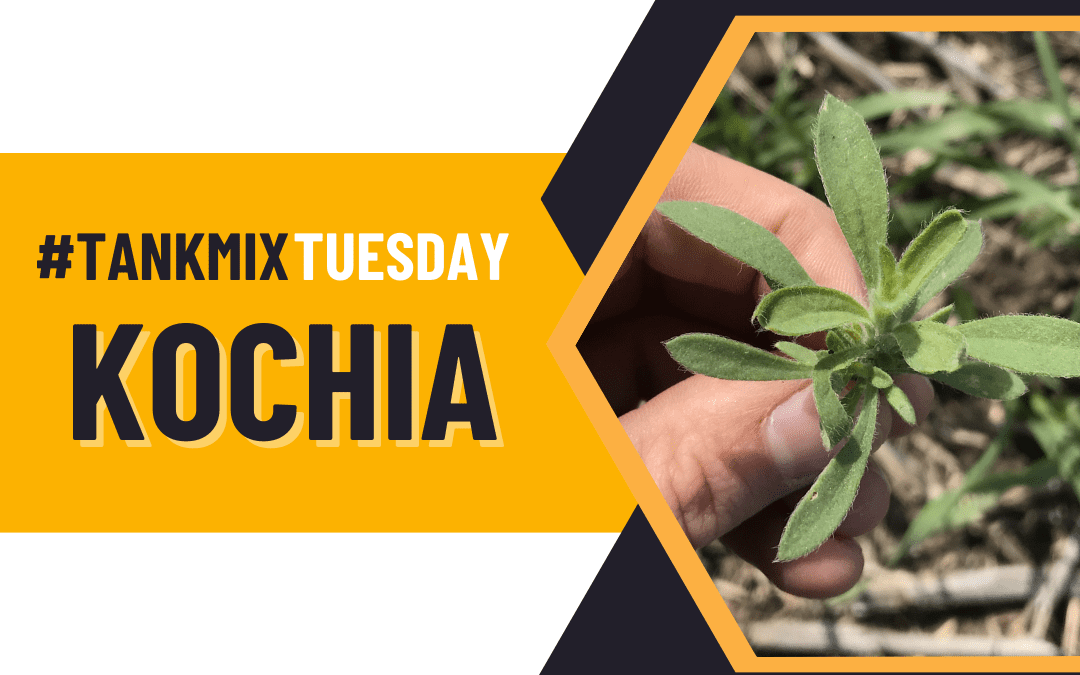Why doesn’t glyphosate alone work well on Kochia?
Kochia is a plant that has become well adapted to varying conditions and evolves quickly to ensure survival. Here are a few ways that kochia evades being killed by glyphosate:
- Hairy leaves – Kochia has fine hairs on the leaves which make it hard for herbicides to penetrate into the plant.
- High reproduction – The average kochia plant produces 15,000 seeds. Lots of seeds means lots of seedlings which emerge in flushes. One pass of glyphosate will only control weeds that have emerged at the time of application.
- Resistance – With repeated use of glyphosate, a large majority of kochia populations have become resistant to glyphosate.
- Decreased Absorption – Studies have found that in higher temperatures, a higher rate of glyphosate is needed to kill kochia because of decreased absorption.
- Minimum rate – A standard rate of 0.33L/ac (180g ai) of glyphosate in RoundupReady canola or tank mixed pre-seed with a group 2 chemical will not kill kochia. The minimum amount of glyphosate needed to kill a small plant is 0.61L/ac (325g ai).
What chemicals kill kochia?
Actives that currently work on kochia include:
- Group 3: ethafluralin
- Group 4: dicamba*, fluoxypyr*, MPCA/mecoprop-P, 2,4-D (weak control)
- Group 5: atrazine
- Group 6: bromoxynil
- Group 9: glyphosate*
- Group 10: glufosinate
- Group 14: carfentrazone, flumioxazin, saflufenacil, sulfentrazone, tiafenacil
- Group 22: paraquat
- Group 27: pyrasulfutole, topramezone, tolpyralate
*resistant populations present in Saskatchewan
There are group 2 chemicals registered for Kochia control BUT in Western Canada 90% of kochia populations are group 2 resistant. In the 2019 Saskatchewan Weed Survey, 87% of kochia plants were glyphosate resistant and 45% dicamba resistant. We do not have group 5 or 14 resistance in Saskatchewan yet, but it does exist in North Dakota.
How can I get a good pre-seed or pre-emerge kill?
Since it’s #TankMixTuesday, ensuring you are getting multiple modes of action in your tank mix is our first recommendation! Tank mixing with other pre-seed products that have a group 4, 6, or 14 mode of action will help eliminate glyphosate resistant populations. Adding a residual product into your tank mix will also help control future flushes. Examples of residual kochia products include Authority and Edge.
Other ways to reduce my kochia populations?
Cultural practices in conjunction with tank mixing will help reduce the amount of kochia in your fields. If you have problem fields or patches, here are a few things to try:
- Growing competitive crops on problem fields ex) winter cereals, annual or perennial forages, rye, or oats.
- Seeding a salt tolerant forage blend in saline areas that are overgrown with kochia.
- Mowing kochia patches in August prior to seed set.
- Increasing your crop seeding rate and decreasing row spacing (if able).
- Targeted tillage in problem areas.
For more information on kochia products and best management practices, talk with your local HFL agronomist. To find the agronomist closest to you, check out our contact page HERE.


